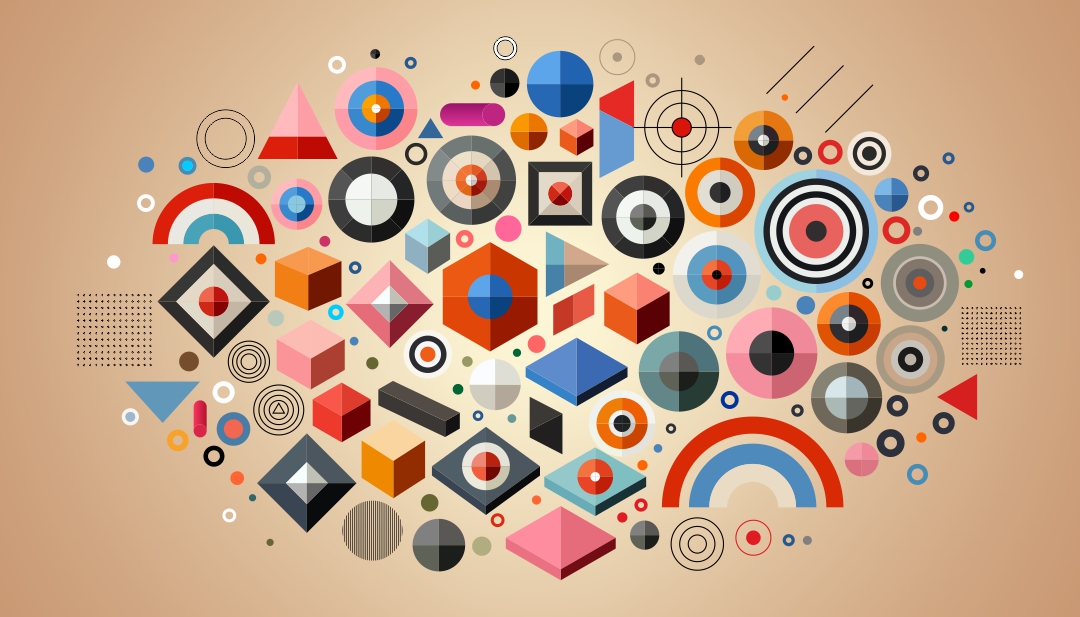Design is more than just aesthetics; it is a powerful tool that communicates messages, evokes emotions, and influences perception. One of the fundamental elements of design is shapes. Shapes are everywhere—in logos, advertisements, product packaging, architecture, and digital interfaces. They play a crucial role in human psychology, affecting how we interpret and interact with the world around us.
nderstanding the psychology of shapes allows designers to create meaningful visuals that connect with audiences on a subconscious level. In this blog, we will explore different types of shapes, their psychological effects, and their impact on branding, marketing, and visual communication.
The role of shapes in human psychology
Shapes are a universal language. Before the development of written communication, humans relied on shapes and symbols to convey ideas and meanings. Even today, our brains process shapes instinctively, associating them with specific emotions and characteristics.
For example, sharp edges can evoke a sense of danger or aggression, while soft curves promote feelings of comfort and safety. This is why shape selection in design is critical; it can determine whether a brand is perceived as reliable, dynamic, friendly, or innovative.

Basic shape categories and their psychological effects
A. Geometric shapes
Geometric shapes are precise, structured, and symmetrical. They are often associated with order, stability, and professionalism.
1. Circles & Ovals
- Represent unity, wholeness, infinity, and protection.
- Associated with warmth, friendliness, and softness.
- Used in branding to convey inclusivity, community, and harmony (e.g., Pepsi, Olympics).
2. Squares & Rectangles
- Symbolize stability, balance, and reliability.
- Often used in corporate branding to project trustworthiness and professionalism (e.g., Microsoft, IBM).
- Due to their structured nature, rectangles are commonly found in website layouts and business materials.
3. Triangles
- Convey energy, motion, and progress.
- Pointing upwards, they represent growth and stability, while inverted triangles can symbolize risk or instability.
- Frequently used by tech companies and startups to reflect innovation and forward thinking (e.g., Adidas, Google Drive).
B. Organic Shapes
Organic shapes are irregular, asymmetrical, and naturally occurring. They evoke a sense of spontaneity and natural beauty.
1. Curves & Waves
- Represent movement, fluidity, and flexibility.
- Often associated with creativity, emotions, and elegance.
- Commonly found in beauty and wellness branding (e.g., Coca-Cola's wave-like logo).
2. Natural Forms (Leaves, Clouds, Water Drops, etc.)
- Evoke feelings of nature, peace, and organic living.
- Used in eco-friendly brands and wellness industries to create a connection with sustainability and health.
C. Abstract Shapes
Abstract shapes do not directly represent real-world objects but are used to convey conceptual ideas.
- They allow for creative interpretations and unique brand identities.
- Used frequently in modern art, digital branding, and minimalist design approaches.
Shapes in marketing and advertising
Shapes play a significant role in how consumers interact with advertisements and packaging. Here are some key insights:
- Rounded shapes: Encourage approachability and friendliness in marketing materials.
- Sharp angles: Create a sense of urgency and attention, often used in sales promotions.
- Asymmetry: Captures attention and conveys uniqueness in product designs.
- Negative space shapes: Cleverly used to form dual imagery and enhance visual storytelling (e.g., FedEx's hidden arrow, Amazon's smile).
Cultural and contextual considerations
Shapes can carry different meanings across cultures. For instance:
- In Western cultures, circles are associated with harmony and eternity, whereas in some Asian cultures, they symbolize completeness and perfection.
- Triangles in religious or mystical contexts may have various interpretations (e.g., Holy Trinity in Christianity, pyramids in Egyptian symbolism).
- Organic shapes in indigenous designs may have spiritual or cultural significance.
Designers must consider these cultural nuances when creating visuals for global audiences.
Shapes in user interface (UI) and user experience (UX) design
In UI/UX design, shapes contribute to usability and visual hierarchy. Examples include:
- Rounded Buttons & Icons: Encourage user interaction and are more inviting (e.g., Apple’s iOS design language).
- Rectangular layouts: Provide structure and readability in digital platforms.
- Diagonal lines & angled elements: Guide user attention and create a sense of movement on websites and apps.
Shapes enhance user engagement by improving navigation and aesthetics.
Practical tips for using shapes in design
- Define your brand personality: Choose shapes that align with your company’s values and target audience.
- Balance hard and soft shapes: A mix of geometric and organic elements can create a harmonious design.
- Use shapes to guide the eye: Diagonal lines and asymmetrical layouts can direct user focus.
- Test shape psychology on different audiences: A/B testing can reveal how shapes impact customer perception.
Shapes enhance user engagement by improving navigation and aesthetics.
Final Thoughts
Shapes are a powerful yet often overlooked element in design. Their ability to communicate emotions, guide perception, and enhance branding makes them a critical tool for designers. Whether you are creating a logo, developing a website, or designing an advertisement, understanding the psychology of shapes can help you craft visuals that leave a lasting impact.
Next time you see a well-designed logo or an effective ad, take a moment to analyze the shapes used. You might be surprised at how much they influence your perception!